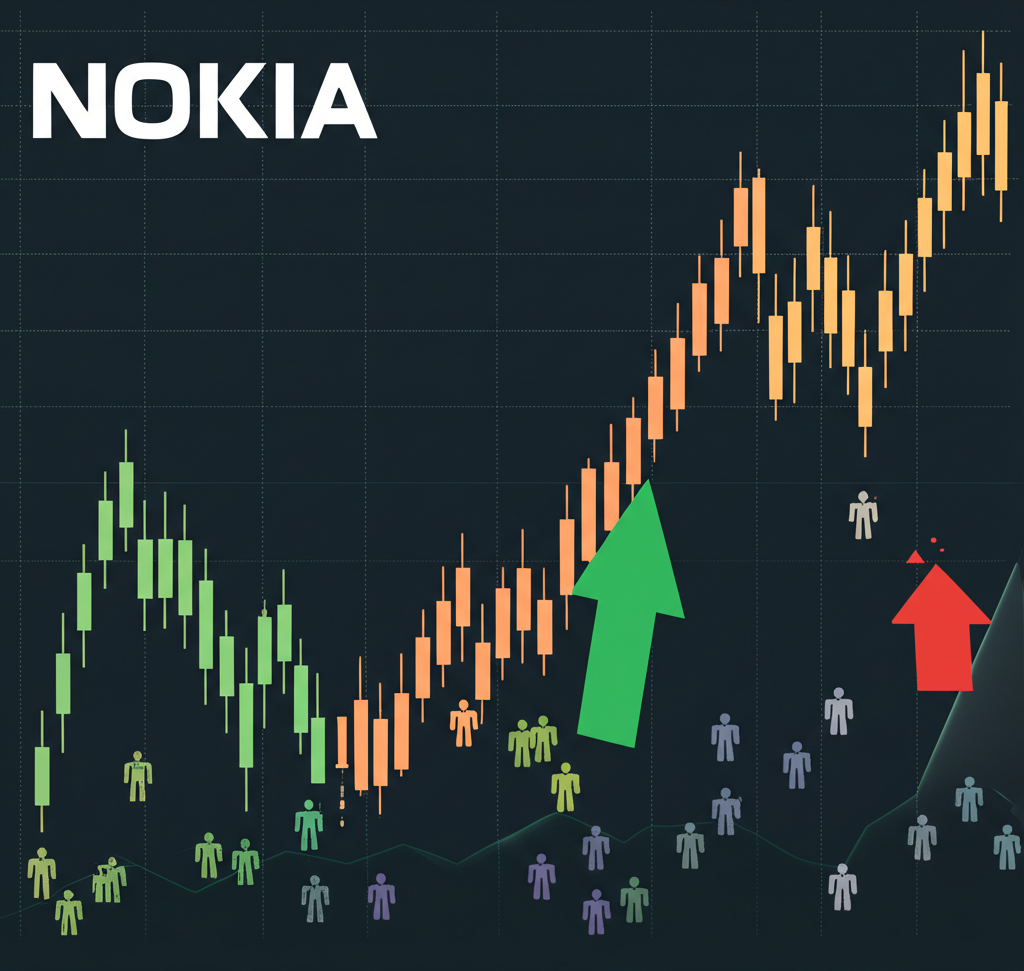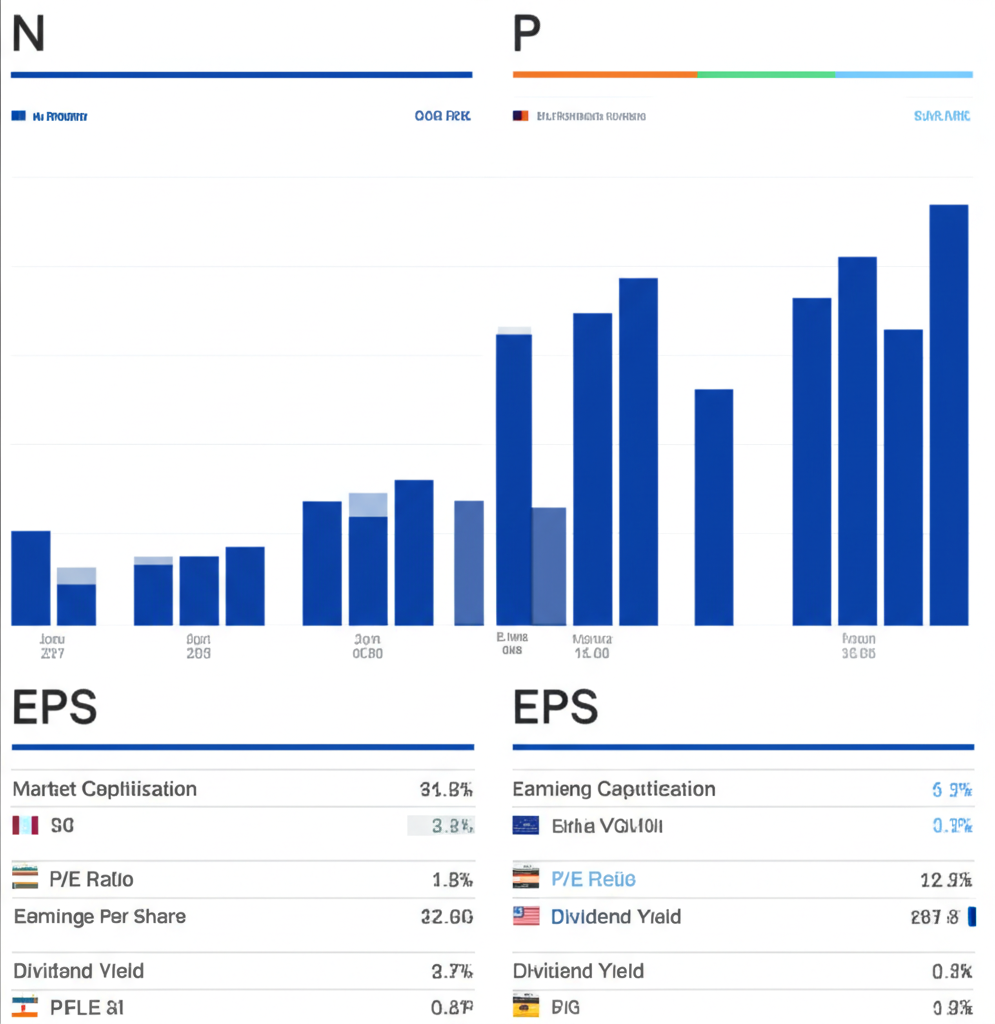Introduction: Nokia Stock in Focus Today

Nokia’s stock continues to draw significant attention from investors around the world, standing at the intersection of telecommunications innovation and global infrastructure development. As one of the foundational names in the telecom equipment space, NOK’s market performance is closely tied to the accelerating deployment of 5G networks and its evolving strategy in enterprise digitalization. Today, traders and long-term investors alike are assessing how recent developments—from financial results to strategic partnerships—are shaping the company’s trajectory. This analysis offers a real-time look at Nokia’s stock movement, unpacks the latest news driving market sentiment, and evaluates the company’s long-term growth potential in an increasingly competitive tech landscape.
Nokia (NOK) Stock Performance: Live Market Data

As of November 19, 2023, 10:30 AM EST, Nokia’s share price was trading near $3.50, reflecting a modest 0.5% increase from the previous close. The stock has maintained consistent trading volume, with tens of millions of shares changing hands daily—a sign of strong market liquidity and sustained investor interest. Intraday volatility remains typical for NOK, influenced by both sector-wide trends and company-specific announcements. A glance at the day’s price action reveals minor swings between support and resistance levels, suggesting cautious optimism among traders as they await further catalysts.
Key Daily Metrics at a Glance

Beyond the headline price, several key financial indicators provide context for Nokia’s current valuation. The company’s market capitalization sits at approximately $19 billion, positioning it as a mid-tier player in the global tech and infrastructure space. While the trailing twelve-month P/E ratio fluctuates based on earnings momentum and investor sentiment, it generally reflects moderate expectations for future profitability. Nokia’s TTM earnings per share serve as a critical barometer of operational performance, particularly as the company works to improve margins across its business units. For income-focused investors, the dividend yield—though modest—adds another layer of appeal. Additionally, the 52-week range offers perspective on recent volatility, showing how the stock has navigated both macroeconomic headwinds and sector-specific shifts.
Breaking News & Recent Developments Affecting NOK

Recent days have seen a flurry of developments impacting Nokia’s market position. Notably, reports emerged of a major 5G network expansion deal with a leading European telecom provider, reinforcing Nokia’s foothold in key Western markets. This contract win, focused on 5G standalone (SA) deployment, underscores the company’s technical capabilities and strengthens its competitive stance against rivals like Ericsson. In addition to commercial wins, Nokia unveiled a new suite of private wireless solutions tailored for industrial clients, signaling its deepening commitment to enterprise digital transformation. Geopolitical dynamics also remain a backdrop, with ongoing supply chain adjustments due to shifting trade policies and regional infrastructure investments influencing investor outlook.
Latest Earnings Report Highlights
Nokia’s third-quarter 2023 earnings report delivered a solid performance, reporting €5.7 billion in net sales and a comparable operating profit of €633 million. The results exceeded some analyst expectations, driven by strong demand in its network infrastructure segment and improved execution in North America and Europe. Management reaffirmed its full-year guidance, citing resilience in core markets despite inflationary pressures and component shortages. The investor community responded positively, with shares ticking upward following the release. According to a Reuters analysis, Nokia’s gains were particularly pronounced in its Cloud and Network Services division, which saw increased adoption of cloud-native platforms. For a detailed breakdown, investors can refer to the official report: Nokia Q3 2023 Financial Report.
Strategic Partnerships and Product Innovations
Nokia has been aggressively expanding its footprint through strategic alliances and product innovation. One recent highlight includes a multi-year agreement with a major Asian telecom operator to supply 5G radio and core network equipment, a move expected to boost recurring revenue streams. The company is also making headway in the private networking space, launching modular, secure wireless systems designed for manufacturing, logistics, and smart cities. These solutions leverage Nokia’s expertise in low-latency connectivity and network slicing, positioning the company as a go-to partner for mission-critical communications. Furthermore, Nokia’s involvement in 6G research initiatives—through collaborations with academic institutions and standardization bodies—demonstrates its long-term vision beyond the current 5G cycle.
Analyst Consensus and Price Targets for Nokia Stock
Analyst sentiment toward Nokia remains cautiously optimistic, with most major financial institutions assigning a “Hold” or “Buy” rating. Data from Investing.com indicates that out of 25 surveyed analysts, a majority lean toward a positive outlook, citing the company’s improving operational efficiency and strategic clarity. The average price target currently ranges between €3.80 and €4.50, implying moderate upside from current levels. Recent upgrades have come from firms highlighting Nokia’s strengthened balance sheet and growing software contribution to margins. Conversely, downgrades often point to persistent competitive pressures and slower-than-expected progress in certain geographic markets. Any revision in consensus estimates, especially after major contract announcements or earnings calls, tends to trigger noticeable trading activity.
Nokia’s Future: 5G Dominance and Growth Drivers
The backbone of Nokia’s future growth lies in its role as a leading global supplier of 5G infrastructure. With telecom operators worldwide upgrading legacy networks and rolling out standalone 5G architectures, Nokia is well-positioned to benefit from sustained capital expenditures in this domain. Its comprehensive end-to-end portfolio—from radio access to core networks and network management software—gives it an edge in delivering integrated solutions. Moreover, the company holds a substantial patent portfolio, generating steady royalty income through its Nokia Technologies division. As 5G adoption accelerates in regions like North America, Japan, and parts of Europe, Nokia’s ability to convert technological leadership into market share will be pivotal.
Navigating the Competitive Landscape
The telecommunications equipment market is marked by fierce competition, with Ericsson and Huawei being Nokia’s primary rivals. While Huawei faces restrictions in many Western countries, Ericsson continues to challenge Nokia for dominance in 5G contracts, particularly in the U.S. and Nordic regions. Nokia differentiates itself through a broad product range spanning mobile and fixed networks, optical transport, and enterprise-grade services. Cost optimization and faster deployment timelines have become key battlegrounds, with both vendors investing heavily in automation and AI-driven network operations. Customer relationships and local support infrastructure also play a decisive role, especially in complex multinational deployments.
Beyond 5G: New Horizons and Diversification
Looking ahead, Nokia is actively diversifying beyond traditional telecom infrastructure. The company is investing in cloud-native network functions, edge computing platforms, and industrial IoT applications—areas expected to drive demand over the next decade. Private 5G networks for factories, ports, and energy facilities represent a high-growth opportunity, with Nokia already securing deployments across Europe and North America. Additionally, its optical networking segment has gained traction amid rising bandwidth demands fueled by AI and hyperscale data centers. Early-stage research into 6G technology further reinforces Nokia’s reputation as an innovation leader, even as the industry is still in the early commercial phase of 5G.
Is Nokia Stock a Good Buy Now? Investment Considerations
Whether Nokia stock represents a compelling investment opportunity today depends on an investor’s time horizon and risk appetite. On the positive side, the company stands to gain from the multi-year 5G buildout cycle, expanding enterprise offerings, and ongoing improvements in profitability. Its diversified business model and strong R&D pipeline support long-term value creation. However, risks remain, including intense competition, margin pressure, and exposure to geopolitical tensions affecting global supply chains. The telecom infrastructure sector is also inherently cyclical, with capital spending patterns influenced by operator budgets and regulatory timelines. As always, investors should perform independent due diligence and consider how NOK fits within a broader portfolio strategy.
Technical Analysis: Key Levels to Watch
From a technical standpoint, traders are monitoring several key levels for potential breakout or reversal signals. The $3.40–$3.45 zone has emerged as a near-term support area, where buying interest has historically been strong. Resistance appears around $3.65, a level that has capped gains in recent weeks. The 50-day moving average, currently near $3.52, serves as a short-term trend indicator—trading above it suggests bullish momentum, while a break below could signal weakness. Volume patterns also matter; recent up-days on higher-than-average volume hint at institutional interest. These technical factors, while useful for timing entries or exits, should be weighed alongside fundamental developments.
Long-Term vs. Short-Term Outlook
Short-term price movements in Nokia’s stock are often reactive—shaped by earnings surprises, contract announcements, or broader market swings. However, the long-term investment case rests on more structural factors: Nokia’s ability to gain or maintain market share in 5G, expand its software and services mix, and execute on cost transformation initiatives. Analysts forecasting Nokia stock for 2025 generally anticipate gradual appreciation, supported by continued infrastructure spending and growth in enterprise networking. While price targets vary, the consensus points to a positive, albeit measured, trajectory. For deeper insights into the sector’s evolution, the Deloitte Telecom Industry Outlook provides valuable context on global 5G adoption and digital transformation trends: Deloitte Telecom Industry Outlook.
Conclusion: Staying Informed on Nokia’s Journey
Nokia’s journey in today’s market reflects both the challenges and opportunities inherent in leading technological transition. While daily stock fluctuations capture immediate attention, the company’s long-term success hinges on its execution in the 5G era and its ability to innovate beyond traditional boundaries. As it expands into enterprise solutions, private networks, and next-generation technologies, Nokia is reshaping its identity from a legacy telecom vendor to a modern digital infrastructure provider. For investors, staying informed through financial disclosures, industry news, and analyst commentary will be essential in navigating the company’s evolving narrative. In a fast-moving sector defined by disruption and reinvention, Nokia’s path forward demands close observation and balanced judgment.
Is Nokia stock a good buy now considering its recent performance?
Nokia stock’s suitability as a “good buy” depends on individual investor goals and risk tolerance. While the company holds a strong position in the 5G market and is diversifying into enterprise solutions, it faces intense competition and market volatility. Investors should conduct thorough due diligence and consider their long-term investment horizon.
What major events or news are currently impacting Nokia’s stock price today?
Nokia’s stock price today is influenced by its latest earnings reports, announcements of new 5G contracts or strategic partnerships, product launches, and broader market trends in the telecommunications sector. Geopolitical events affecting global supply chains or trade policies can also play a role.
Why has Nokia stock experienced fluctuations recently, and what’s causing it to fall or rise?
Stock fluctuations are common for companies like Nokia. Rises can be attributed to strong earnings, significant contract wins, positive analyst revisions, or favorable market sentiment regarding 5G growth. Falls might result from weaker-than-expected financial results, increased competition, supply chain disruptions, or negative macroeconomic news.
Does Nokia have a sustainable business model and a promising future in the telecommunications sector?
Nokia is actively working to ensure a sustainable business model by focusing on its core 5G infrastructure, expanding into high-growth enterprise and private network segments, and investing in future technologies like 6G. Its long-term future is promising, provided it continues to innovate and successfully navigate the competitive landscape.
Where can I find the most reliable and up-to-date Nokia stock news today, including live updates?
For the most reliable and up-to-date Nokia stock news and live updates, you should consult reputable financial news outlets like Reuters, Bloomberg, The Wall Street Journal, and major stock market data providers. Nokia’s official investor relations website is also a primary source for company announcements and financial reports.
What are analysts predicting for Nokia’s stock price in 2025 and beyond?
Analyst predictions for Nokia’s stock price in 2025 and beyond generally forecast continued growth, driven by the sustained global demand for 5G infrastructure and Nokia’s strategic diversification. However, specific price targets vary, reflecting different analytical models and assumptions about market conditions and company performance.
How do Nokia’s current financial results compare to its main competitors?
Nokia’s financial results are typically compared to its main competitors, such as Ericsson. While both companies are key players in the telecom equipment market, their performance can differ based on specific market exposures, contract wins, and operational efficiencies. Investors should review their respective earnings reports for a direct comparison.
What role does 5G technology play in Nokia’s long-term stock outlook?
5G technology is central to Nokia’s long-term stock outlook. As a leading provider of 5G infrastructure, Nokia is poised to benefit from the ongoing global rollout, upgrades, and expansion of 5G networks. Its success in securing 5G contracts and innovating within the 5G ecosystem directly impacts its revenue and profitability.
Are there any significant Nokia stock rumors or corporate announcements investors should be aware of?
Investors should always prioritize confirmed corporate announcements from Nokia’s official channels (e.g., press releases, investor calls) over rumors. Significant announcements typically include earnings results, major contract awards, mergers or acquisitions, new product launches, or changes in leadership or strategy. Reliable financial news sources will report on these promptly.
What is the Nokia share price in EUR today, and how does it convert to USD?
Nokia’s shares are primarily listed on Nasdaq Helsinki (NOKIA) in EUR and on the New York Stock Exchange (NOK) as American Depositary Receipts (ADRs) in USD. The EUR price can be converted to USD using the prevailing exchange rate. For example, if NOKIA trades at €3.20 and the EUR/USD rate is 1.09, the equivalent USD value would be approximately $3.49 per share (assuming a 1:1 ADR ratio, which may vary).

留言